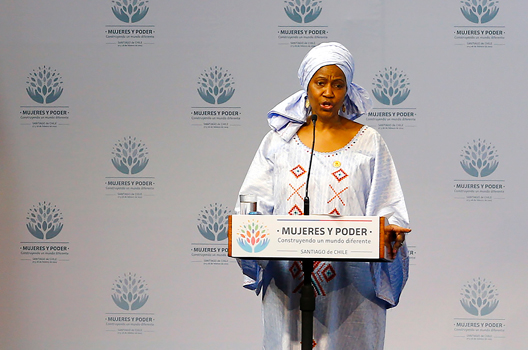 In recognition of International Women’s Day 2017, and under the banner of #BeBoldForChange, the United Nations (UN) is calling upon all actors to strive for equal representation of men and women in the professional world. UN Women Executive Director Phumzile Mlambo-Ngcuka emphasized this focus in a message entitled: “Women in the Changing World of Work: Planet 50-50 by 2030,” where she outlined an agenda for gender equality in the workplace.
In recognition of International Women’s Day 2017, and under the banner of #BeBoldForChange, the United Nations (UN) is calling upon all actors to strive for equal representation of men and women in the professional world. UN Women Executive Director Phumzile Mlambo-Ngcuka emphasized this focus in a message entitled: “Women in the Changing World of Work: Planet 50-50 by 2030,” where she outlined an agenda for gender equality in the workplace.
However, anyone who has attended a meeting or two in the energy sector must have noticed that this is a sector dominated by men. As energy minister in the Icelandic government from 2013-2017, I attended several meetings, both at home and abroad. I led business delegations, attended ministerial meetings, conferences, and exhibitions; time and again the rooms were usually filled with men. On average, one in ten participants in these meetings was a woman. The inequality was even more visible if the events were smaller and only attended by top management. One of the most striking examples is when I led a twenty-two-member business delegation from the Icelandic geothermal industry to Nicaragua in 2014. I was the only woman in the delegation.
This was the case, despite the fact that I come from Iceland, the country that ranks at the top of the World Economic Forum’s Gender Equality Index and has done so for several years running. While the major energy companies in Iceland have all made a considerable effort to correct this imbalance in recent years, based on the numbers, there is still work to do to achieve gender parity in the workplace. For example, one of the largest Icelandic power producing companies, which has had gender equality on its radar for a number of years, still maintains a ratio of eighty men to every twenty women overall in the company. However, on its board of directors there are three men and two women, and on the executive team they have five men and two women.
Global comparative statistics on female employment in the energy sector is rather hard to come by. The “energy industry” can be defined in many different ways and has a different structure from one country to the other. We have some indicators however, such as the EY Women in Power and Utilities 2016 Index. The Index is based on an analysis of the boards and leadership teams of the top 200 utilities companies around the world, based on revenue. These results are quite striking and demonstrate that there is work to be done in this arena as well.
Broken down by geographical regions, the index shows, for example, that in both Europe and North America only 7 percent of executive directors in the utility sector are women; 23 percent of non-executive directors in both regions are women. Only 12 percent of senior management team positions in Europe are held by women, and 21 percent in the United States.
While this index does not provide the whole story, it gives an indication clear enough to see that the energy sector is nowhere near the fifty-fifty #BeBoldForChange target. Some might question the necessity of equal representation of men and women in every single sector, claiming we should just accept the fact that the energy sector is a masculine sector where women, naturally, do not fit in.
My answer to that argument is simple: Every sector of society, whether it is energy, politics, education, or nursing, benefits from having both genders represented at the table and making key decisions. We need to have role models for our sons and daughters everywhere so that they are raised believing that they can be whatever they want to be when they grow up.
That is why it came as a pleasant surprise to me when I realized that there are plenty of female role models in the Icelandic energy sector; we just did not know each other. That changed with the establishment of the Icelandic Association of Women in Energy, a networking group founded in 2016 by and for women working in that sector. Initially, they hoped to attract a group of twenty to thirty women to an introductory meeting to see if there really was a need for such an organization. To everyone’s surprise, more than 200 women attended and the amount of “girl power” in that room could light up a much bigger city than Reykjavik. Now the association is over a year old, and has already had a positive impact on gender equality in the industry. The commonly used excuse—“I just couldn’t find any qualified woman to take a seat on the board or to fill that position”—is no longer viable when there is a list of over 200 female experts working in the industry from which to choose.
I wholeheartedly support the UN’s policy to ensure “that the world of work works for all women,” because in the end I believe it will make the world as a whole work better for all of us.
Ragnheiður Elín Árnadóttir is a nonresident senior fellow with the Atlantic Council’s Global Energy Center. From 2013 to 2017, Árnadóttir served as Iceland’s minister of industry and commerce, which included the energy portfolio. You can follow her on Twitter at @REArnadottir.
Image: Executive Director of UN Women Phumzile Mlambo-Ngcuka delivers a speech during the UN World Summit Meeting on Women and Power opening ceremony in Santiago, February 27, 2015. (Reuters/Ivan Alvarado)
